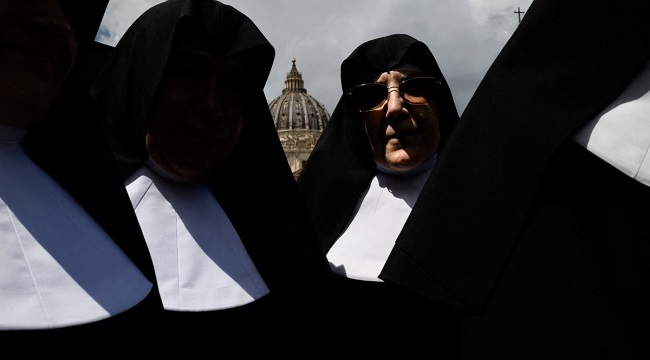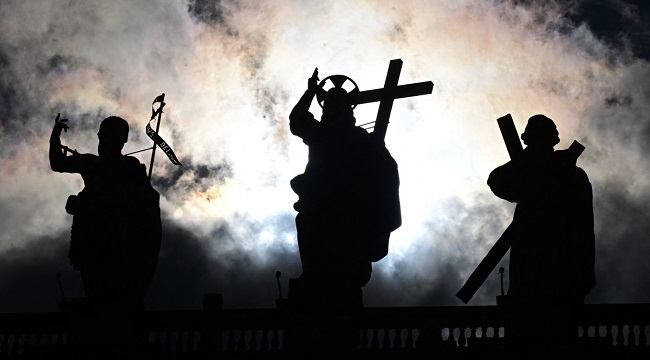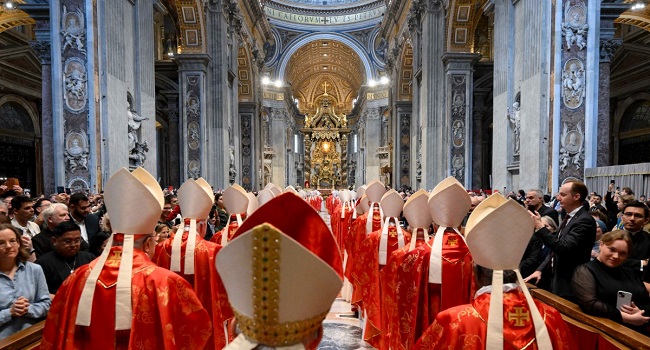Pope Francis’s successor will face an array of challenges, from disputes over the place of women, the Vatican’s financial woes and the ongoing clerical abuse scandal.
Unity
Uniting a divided church will be one of the main tasks facing the new pope.
During his 12-year papacy, Francis often riled traditionalists, particularly in the United States and Africa, with his efforts to open up the Catholic Church.
There were his repeated calls to countries to welcome migrants, his restrictions on the use of the Latin Mass and — most grievously — his decision to open the door to the blessing of same-sex unions.
The new pope will have to make peace between the Church’s conservative and liberal fringes.
Sexual abuse
Francis brought in a series of measures to combat clerical sexual abuse, from opening up Vatican archives to lay courts to making it compulsory to report abuse to Church authorities, but victims’ associations said he did not do enough.
The issue remains a major challenge for the Church, with the scandals showing no sign of abating.
And it will not be an easy one to solve. In many African and Asian countries, the subject remains taboo. Even in Europe, Italy has yet to launch an independent investigation into abuse allegations.
Diplomacy
As well as being leader of the world’s 1.4 billion Catholics, the pope is the head of the Vatican state.
His voice carries weight in a world wracked by numerous conflicts, from Ukraine to Gaza and Sudan.
The pope’s opinions have consequences.
Francis at various times angered Israel, Ukraine, Russia and the United States with his comments on conflicts and immigrants.
The rise of populist politics, the development of artificial intelligence and the climate emergency are all issues that will demand the pope’s attention, as will immigration.
And then there are the delicate relations with China, not least the thorny issue of appointing Catholic bishops in the country.
Women’s place
The place of women in the Church will also continue to spark debate. Francis appointed women to key positions, including in January naming the first woman prefect of a Curia department.
Hopes that he would allow women to be named as deacons were dashed, however, at the last assembly on the future of the Church.
Francis also increased the role of the laity in the Church.
Fewer priests
Francis’s successor inherits a Church that is growing in the southern hemisphere but is declining in Europe.
The total number of priests spreading the faith is also falling — albeit slowly.
Between 2022 and 2023, the number of priests around the world dropped by 0.2 percent to 406,996, despite an uptick in Africa and Asia.
Though church attendance is different from one region to another, the rise of evangelical churches, particularly in Africa, is creating stiff competition.
Finances
Pope Francis reformed the Vatican’s scandal-tainted finances, but there remains much to be done — and cardinals were briefed on the situation ahead of the conclave.
The Holy See continues to face a chronic budget deficit, amid a decline in donations from the faithful.
Style
Francis ripped up the rulebook for popes, eschewing papal apartments to live in rooms in the Vatican’s Santa Marta guesthouse, making his own phone calls and writing his own replies to letters.
But he also faced criticism for an authoritarian management style as well as his tendency to speak his mind, often leaving diplomats scrambling to explain his public statements.
The next pope will have to find a way to show his own closeness to the faithful without trying to imitate Francis, forging his own path.





